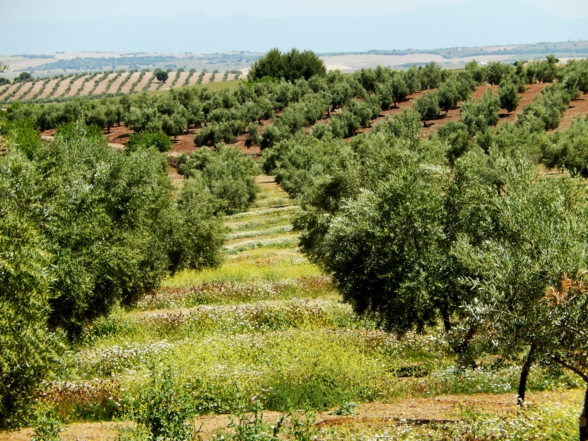

|
The Range |





|
The range of Extra Virgin Olive Oil of Tierra de Luz© has been built on the 3 main types of Olive Oil flavours: Intense, Aromatic and Mild. Our suppliers are all independent mills or small farmers cooperatives.
The flavour types of the olive oils will differ depending on the olive varieties (Picual, Hojiblanca, Arbequina) from which they have been made and their geographical origin guaranteed by the European PDO seal (Sierra Magina, Baena, Les Garrigues).
Thus, the 3 Extra Virgin Olive Oils we propose, are all monovarietal and PDO (Protected Designation of Origin). They are « extracted cold » from early harvested olives (at the beginning of the harvest campaign, just at optimal maturity).
We propose them in 500ml black glass bottles, hermetically closed by black aluminium cap with a clean and safety liquor like pourer.
The labels, very colourful, combine attractiveness and useful information to help the customer through user-friendly pictograms. |












|
Saveur Intense Picual PDO Sierra Magina |
|
Saveur Aromatique Hojiblanca PDO Baena |
|
Saveur Douce Arbequina PDO Les Garrigues |
|
|
Variety |
PDO |
|
Red: Intense
For the ones who love strong olive taste.
|
Picual: The name of this olive variety comes from its blunt shape. It is mainly produced in the Jaen region, in Andalusia, Spain. Very « stable » extra virgin olive oils are made with this variety thanks to a very high polyphenol content (more than 700mg/kg). « Stability » means long-term conservation and cooking temperature over 190ºC Taste: Very fruity, strong body, fresh olive and dried fruits aromas, tomato, fig and a hint of wood aftertaste with a pleasant touch of grassy bitterness. Use: Ideal for pan cooking (meat, mushrooms, …) or stew, but also for any dish one would look for a strong olive taste (tomato, onions, corn salads, steam cooked vegetables and pasta before serving, lentil and beans,...). |
PDO Sierra Magina: Located in the heart of the Jaen Province, in the North of Andalusia, this small massif with some peaks over 2000m, offers the ideal conditions for olive tree culture: sandy and light lands, good sun exposure, rain in spring and dryness all over the rest of the year.
|
|
Turquoise blue: Aromatic
Brings about aroma and exalts the food’s natural flavours. |
Hojiblanca: Originating from the South of the Cordoba region, west of Lucena, its name refers to the very light colour of its leafs. Taste: Fruity, well balanced, very scented, sweet, with apple and almond aromas and a light spicy aftertaste. Use: Ideal for quick shellfish cooking or white fish on a low heat, lightly fry vegetables, pasta or raviolis before serving, o to add scent to the flavour of some products (potatoes, cucumbers, tuna, asparagus,…). |
PDO Baena: Located between Jaen and Cordoba, South of the Guadalquivir river, and North of the Subbetican mountains, this PDO is famous for producing the best Spanish olive oil.
|
|
Yellow: Mild
Enhance the taste of delicate dishes without concealing it. |
Arbequina: Some people assure that it has been brought in Spain by the Catalan King James 1st, after the conquest of Majorca island over the Muslims. Other insist that it comes from Palestine and has been introduced in Spain in the 17th Century by the Duque of Medinaceli. The only certainty is that it received its name from the Catalan city of Arbeca, where it has been grown for the first time in Spain. The fruit is particularly small. Taste: Light and sweet, delicate and slightly sugary, almond and freshly cut grass aromas. Use: Ideal for people not very accustomed to bitter extra virgin olive oils. Its round and sweet aromas are perfectly indicated for and light salsas (gribiche, tartar, mayonnaise, béchamel,…) or for pastry, fruits carpaccios or pan fried. |
PDO Les Garrigues: Located South of the Lerida region, Catalonia, Spain, its main features are the dryness of its climate and a wild vegetation made of bushes and hawthorns, with some scattered holm oak forests. This landscape is well known for its terraces leaning against small stone walls. The hot summers are followed by cold winters, cold enough to eliminate most of the plagues that attack the olive tree. This is the emblematic land of the Arbequina variety.
|